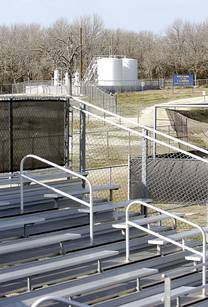Researchers in Denton, Texas have found that ‘socially vulnerable’ areas tend to have more gas wells near schools, according to the Denton Record-Chronicle.
According to the Texas Railroad Commission, more than 15,300 wells have been drilled in the Barnett Shale. Chetan Tiwari, geography professor, and his student, Nathaniel Smith, conducted an analysis of the proximity of gas wells to schools and other public spaces in Barnett Shale neighborhoods. Tiwari was interested to see if there are any patterns in the affected communities.
Tiwari used a social vulnerability index scale, which considers social measures such as unemployment rates and language barriers to examine the risk for a social disaster in response to man-made hazards, to generate measurements for the study.
Findings show that inner-city neighborhoods and their elementary schools are the most vulnerable on the index, but no more likely to have gas wells near their schools than more affluent neighborhoods with lower vulnerability scores. Tiwari said a possible explanation for this is that inner-city neighborhoods are already densely populated and have little room for gas wells.
 The study also found that those neighborhoods of medium social vulnerability are far more likely to have gas wells as close as 500 feet to their elementary schools. While some school districts require certain distances between gas wells and schools, Denton County has no existing policy. This makes children the most vulnerable population in the area.
The study also found that those neighborhoods of medium social vulnerability are far more likely to have gas wells as close as 500 feet to their elementary schools. While some school districts require certain distances between gas wells and schools, Denton County has no existing policy. This makes children the most vulnerable population in the area.
Tiwari and Smith encountered many flaws with the Texas Railroad Commission’s data throughout their study. The commission reported sites where there were no gas wells, and researchers also found gas wells absent from the state agency’s records.
 A new study published in Ground Water two weeks ago has concluded that fracking chemicals injected into the ground could reach drinking water supplies much more rapidly than previously predicted, ProPublica reports.
A new study published in Ground Water two weeks ago has concluded that fracking chemicals injected into the ground could reach drinking water supplies much more rapidly than previously predicted, ProPublica reports.





